McIntosh MCC404M Power Amplifier
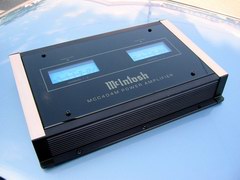 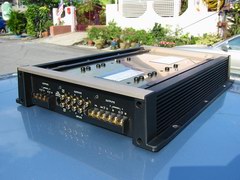 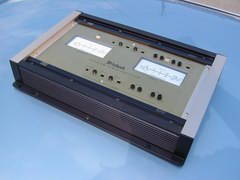
McIntosh has always been my favorite brand when selecting a car amplifier. Besides the well known performance in sound quality, the build quality is also of top notch. Very solid and really built to last. The sound reproduction is sonically accurate and transparent. This amp produces 100 watts RMS x 4 channels with THD of 0.005% from 20-20kHz, all channels driven. I run the first two channels to power my front components, and bridged the other two producing 400 watts to power my subwoofer. Even in bridged mode, the distortion level is still very low, only 0.007%.
I had two McIntosh amps in the past, the MC425 (50W x 2ch) and MC427 (100W x 2ch). Both are great amps. The only reason I sold them is because I was running out of trunk space. In terms of sound quality, the MCC404M does not sound any better than the older models I had. But it is packed with extra features such as variable highpass & lowpass crossovers, a one-band equalizer with variable center frequency, and will double the power when bridged or when running at 2 ohms. It also takes 8V inputs as compared to 2V in the older models. And just like all the other McIntosh amplifiers, this amp is also equipped with PowerGuard, a protection circuit which prevents the amplifier from being overdriven into clipping.
Going with a 4 channels amp also gives better flexibility in installation than a typical 2 channels amp. It occupies less space and is generally easier to install/remove. Frankly speaking, I am tired of buying and selling stuffs. I ended up losing more money in the long run. Don't make the same mistake I did. If you're looking for an amp, look for something that is both lasting and of high quality. Constantly upgrading from low end to high end will eventually cost more money than buying some really good ones in the first place. Buy something that you can enjoy for many years.

With regards to amplifier tuning, the first thing I did was to set the gain levels. Despite the separate gain controls for each individual channels, setting the gain levels was relatively easy with the aid of the built-in wattmeters. Normally, you would need an oscilloscope or an SPL meter to properly match the left and right channels so that they're equally balanced. For my case, I just played a 1kHz sine wave test tone on the head unit, monitor the needles on the wattmeters and turn the gain knobs accordingly until both the left and right channels are equal.
The crossovers were bypassed on the front components, and a highpass filter is set at 20Hz (24dB/oct) providing a subsonic filter on the subwoofer. The one-band environmental equalizer is used to reduce a peak response at 1kHz. I use an RTA software running on PocketPC handheld for this purpose. It's not very accurate, but it does show the problematic areas in my system. With some patience, I managed to make the necessary adjustments reasonably well.
That's all as far as tuning goes. The following pictures show how the trunk looks like after the amplifier is in place.
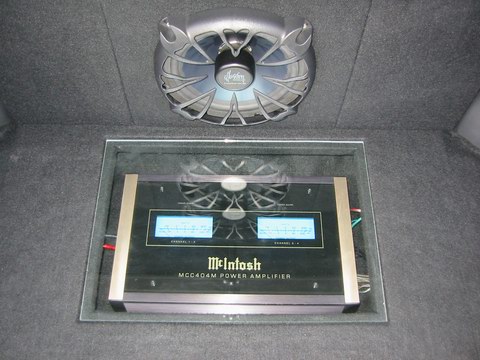
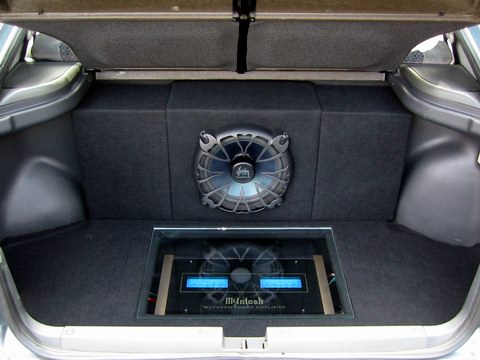

Focal Utopia 165W Component Speakers
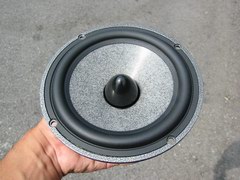 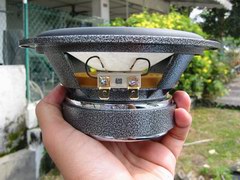 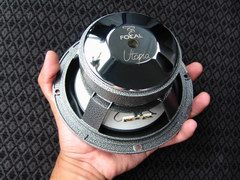
The frontstage is created by Focal Utopia 165W component speakers. It consists of a pair of 6.5" midbass driver (6W2) constructed using sandwiched "w" cone, 2" titanium inverted dome tweeters (TN51), and 24dB/octave passive crossovers (FA165W) with dual inputs. The midbass drivers are mounted in the doors, and the tweeters on kickpanels for optimum imaging. The passive crossovers are biwired and placed in the trunk. Highpass filter is set at 63Hz @ 24dB/oct using my head unit's built-in crossover.
I bought these speakers as an upgrade to my lower range Focal, the Polykevlar 165K. The Utopia speakers are more accurate, and produce more subtle details than the 165K. However, RTA test shows that these speakers have a peak response at 1kHz of about +5dB. That's a lot and very noticeable to the ears. The TN51 tweeters on the other hand, are smooth and reasonably flat on the RTA. A lot of people claimed that the tweeters are too bright, but I didn't find this to be the case. Yes, the tweeters are vivid and crisp, but not harsh at all. I reduced the 1kHz peak using the built-in variable one-band equalizer on my amp. With the aid of RTA, I tone down this peak to improve the overall balance. I think the one-band EQ fix is much better than a 13/30 band outboard EQ because it allows me to select the frequency more precisely at the turn of the knob. Another adjustment that I made is to reduce the tweeter level by -4dB on the passive crossovers to compensate for the high sensitivities.
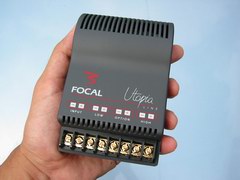 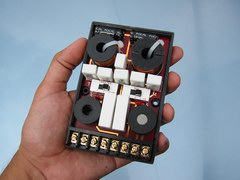
The tweeters are among the best I've listened so far. It is very clear and accurate, and if installed properly, will sound as smooth as soft dome tweeters and yet, as detailed as metal dome tweeters. It sounds very bright and harsh if improperly installed. Installation does make a huge difference in overall sound quality, so let me share my experiences with these interesting tweeters...
The most important aspect, yet often overlooked, is speaker placement. A lot of time should be spent in trying different speaker placement before settling for one that is best. I had a Focal Polykevlar 165K before I upgraded to the Utopia 165W. I've tried quite a number of different speaker placement with the kevlars and settled with the mids in the doors and tweeters on a-pillars. Placing the tweeters in the kickpanels sound horrible. At that time, I wonder why a lot of people ever put it there. I was happy with my setup, and everything went just fine.
Later when I've upgraded to Utopia, and with my good experiences with the kevlars, I use the same speaker placement. There are of course some improvements in sound quality. However, somehow the overall sound doesn't sound right to me. After a lot of tweaks here and there without any significant progress, I decided to look through the web and see how the other Utopia owners installed their speakers. I saw a lot of people put the mids in the doors, and tweeters in the kickpanels. Putting my bad experiences with kickpanels aside, I decided to try it anyway.
To my surprise, it sounded much better! Much more than I thought possible. And after fine tuning the angles for several weeks, I managed to get it right. The following pictures show how the tweeters are mounted.
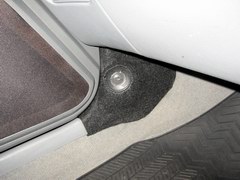 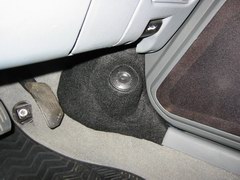
Now it's time to understand this interesting behavior. I don't know how to explain this for sure, but I do know that the TN51 has a much better sound dispersion than the TN45. So when angled properly, the sound doesn't appear to come from under the dash at all. The stage would still be at eye level, or just slightly lower. Placing the tweeters in the kicks also makes it closer to the mids, providing a good "point source". This greatly helps imaging, and reduces unnecessary phase shifts between the mids and tweeters. The results are, solid vocals and good stage depth. Based on my experiences, stage width and height are easily achieved. But not stage depth. To get the proper stage depth, all phase shift problems need to be addressed. A system with phase shift problem will never get a good sense of stage depth.
Another aspect to consider is the passive crossovers used. My Polykevlar 165K comes with an 18dB/oct passive crossovers. Unlike a 12dB/oct crossover where the speaker polarities can be reversed to "correct" phase shifts, it is not the case with 18dB/oct. So even when the mids and tweeters are very close to each other, it will still have a 270 degrees phase shift. Reversing the speaker polarities will not help either. That explains why my old TN45 doesn't blend well with the mids when placed in the kicks.
The Utopia 165W set however, comes with a pair of 24dB/oct crossovers which yield a 360 degree phase shift, or in other words, they're back in phase. This makes kickpanel an ideal location for the tweeters. Good imaging and good stage depth. Having said that, one disadvantage of using kickpanel is when you have a big sized passenger. Their legs will be blocking the tweeters and ruin the soundstage.
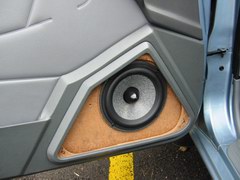 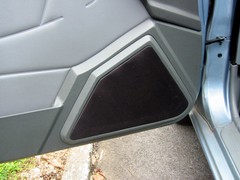 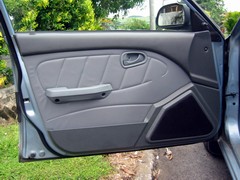

Illusion Audio LM-10 Subwoofer
I need a good 10" subwoofer to match my front components. After listening to several brands, I decided to go with Illusion Audio. When I first looked at the sub, I was impressed. The fact that the magnet is located on top of the cone rather than the typical bottom location really caught my attention. However, after closer look, it seems that the cone material is not as stiff as most other brands, and the magnet used is very small. It turns out that it uses neodymium magnet which is ten times more powerful than the conventional ferrite magnet, so it can be made smaller without any ill effects.
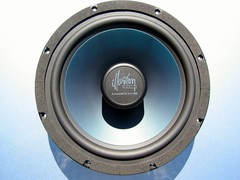 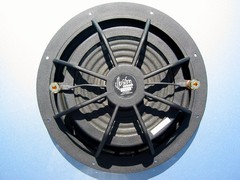 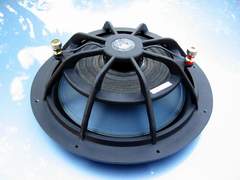
My excitement actually led the store owner to let me audition the sub in my car. Using a Steg 75.2x amplifier running in bridged mode, 250 watts goes to the sub. I played track 12&13 from JMLab CD to test whether the sub is up to the abuse. To my surprise, it played well and can get very loud without compromising much on sound quality. Then I tried "Without You" by Mariah Carey. After a few minutes of critical listening, I was quite happy with it. I came back a week later and bought the sub.
The sub is rated 200W continuous at 4 ohm with a sensitivity of 93dB. I set a lowpass filter at 63Hz @ 24dB/oct using my head unit's built-in crossover. The enclosure is constructed using 3/4 inch MDF with a net air volume of 1.0 cu.ft. I chose a sealed type enclosure because of its tight and accurate bass characteristics. Overall, I would consider this sub as good but not the best match to complement my component speakers. Ideally, a Focal Utopia 27WX subwoofer would be better. But they're way too costly. So I'll just have to live with my current sub in the meantime.
That's all I've got. Thanks for viewing.
Page 1 | Page 2

Last updated : February 18, 2005 - Friday 10:15 AM MYT
(c) 2005 Razak's Car Audio Website
ra24k@yahoo.com
|

